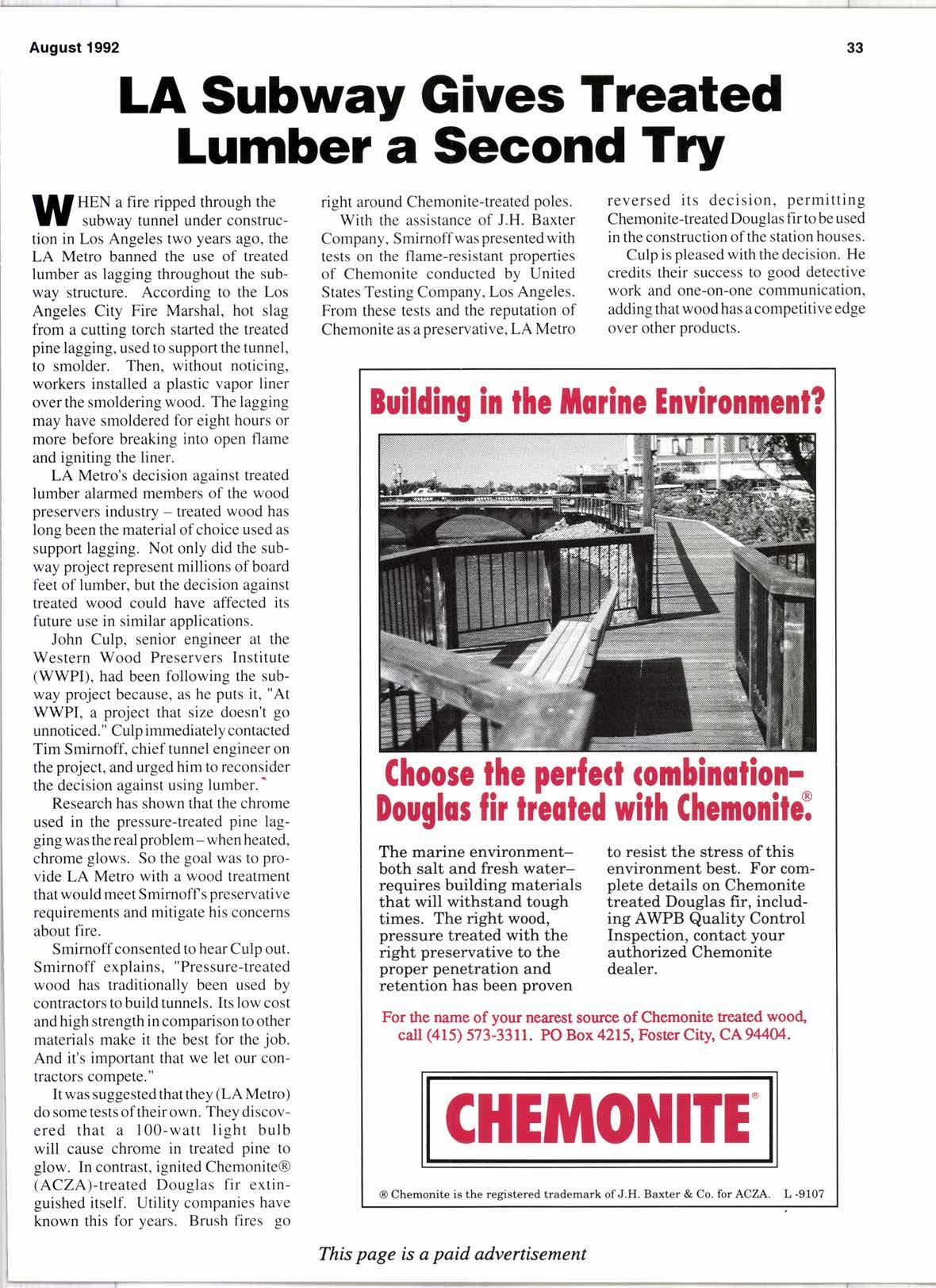
1 minute read
LA Subway Gives Treated Lumber a Second Try
HEN a fire ripped through the subway tunnel under construction in Los Angeles two years ago, the LA Metro banned the use of treated lumber as lagging throughout the subway structure. According to the Los Angeles City Fire Marshal, hot slag from a cutting torch stafied the treated pine lagging, used to support the tunnel, to smolder. Then, without noticing, workers installed a plastic vapor liner overthe smoldering wood. The lagging may have smoldered for eight hours or more before breaking into open flame and igniting the liner.
LA Metro's decision against treated lumber alarmed members of the wood preservers industry - treated wood has long been the material of choice used as support lagging. Not only did the subway project represent millions of board feet of lumber, but the decision against treated wood could have affected its future use in similar applications.
John Culp, senior engineer at the Western Wood Preservers Institute (WWPI), had been following the subway project because, as he puts it, "At WWPI, a project that size doesn't go unnoticed. " Culp immediately contacted Tim Smirnoff, chief tunnel engineer on the project, and urged him to reconsider the decision against using lumber.'
Research has shown that the chrome used in the pressure-treated pine lagging was the real problem-when heated, chrome glows. So the goal was to provide LA Metro with a wood treatment that would meet Smirnoff s preservative requirements and mitigate his concerns about fire.
Smirnoff consented to hear Culp out. Smirnoff explains, "Pressure-treated wood has traditionally been used by contractors to build tunnels. Its low cost and high strength in comparison to other materials make it the best for the job. And it's important that we let our contractors compete."
It was suggestedthatthey (LA Metro) do some tests of their own. They discovered that a 100-watt light bulb will cause chrome in treated pine to glow. In contrast, ignited Chemonite@ (ACZA)-treated Douglas fir extinguished itself. Utility companies have known this for years. Brush fires go right around Chemonite-treated poles. With the assistance of J.H. Baxter Company, Smirnoff was presented with tests on the flame-resistant properties of Chemonite conducted by United States Testing Company, Los Angeles. From these tests and the reputation of Chemonite as a preservative, LA Metro reversed its decision, permitting Chemonite-treated Douglas fir to be used in the construction ofthe station houses.
Culp is pleased with the decision. He credits their success to good detective work and one-on-one communication, adding that woodhas acompetitive edge over other products.









